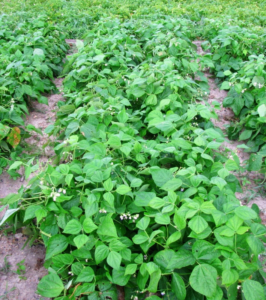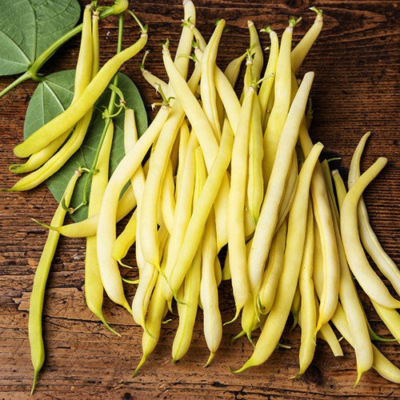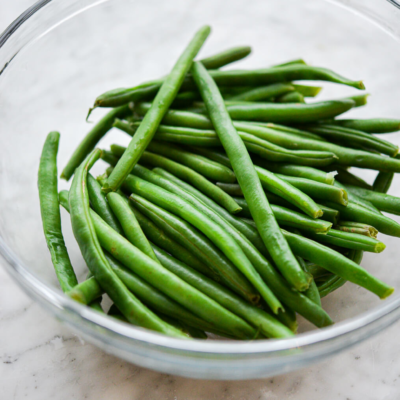“Weather means more when you have a garden. There’s nothing like listening to a shower and thinking how it is soaking in around your green beans” — Marcelene Cox, Author
The two types of beans most commonly grown in our garden are pole beans and bush beans. One difference, as the names imply, is that pole beans grow as a climbing vine (and need plenty of space) while bush beans grow on a short, bushy plant that gets only about two feet tall and two feet across.
Another significant difference is that bush beans mature more quickly (usually ready to harvest in 40 to 60 days) and are determinate — turning out a single crop of beans and then dying — while pole beans are indeterminate and contin- ue to produce a crop for a month or more if beans are harvested every day or so. Pole beans take longer to produce a crop because they must put energy into growing vines before producing flowers.




Another choice you get to make: green beans or wax (yellow) beans.




Benefits and nutritional information:
- Beans are described as a nutrient-dense veggie packed with vitamins C and K, cholesterol-free, fat-free, and a good source of fiber.
Starting:
- Beans are planted from seeds when the soil temperature is a minimum of 60 degrees. Beans should not be started indoors since their roots are fragile and may not survive transplanting.
- To help your beans accomplish their job of fixing nitrogen in the soil, you may want to add a soil inoculant of the Rhizobium leguminosarum bacteria which helps legumes form their nitrogen fixing nodules. Packages of this inoculant are available commercially in small quantities for us home gardeners.
- Bush beans should be sown 1” deep and 2” apart in rows 18” apart. Pole bean seeds should be spaced 3” apart and in position to grow up whatever trellis you’ve provided for them.
- To get a longer harvest from bush beans, stagger plantings every two weeks for a continuous harvest.
Thinning, training
- Thin bush beans to one plant every 3 to 4 inches. Thin pole beans 3 feet apart.
- Pole beans need to be supported. There are a wide variety of trellising options to choose from.
Signs of over-watering, nutrient deficiency
- Yellowing leaves can be a sign of nitrogen deficiency in beans. However, adding a nitrogen-rich fertilizer can cause the plant to produce too much vege- tation and not enough fruit. The best solution would be the soil inoculant mentioned earlier.
- Beans are quite shallow-rooted and not prone to overwatering as much as most other crops.
Pests and pest controls
- When beans begin to sprout they can be vulnerable to damping off fungus
- and garden slugs.
- Aphids can be a significant pest of beans, not only reducing the plant’s vigor and productivity by sucking out nutrients but by spreading mosaic virus.
Harvesting
- Beans are harvested before the seed grows too large and the plant thinks its job has been finished. Once you see the seeds inside bulging, green beans are past their peak and will be tough and less tasty.
- Harvest beans in the morning when their sugar level is highest.
- Snap or cut the beans off, being careful not to tear the plant.
- The overall harvest of pole beans will continue for many weeks if the beans are picked every day or so.
Once the vines/bush have stopped producing beans, don’t pull the plants up but just cut them off at ground level and let the roots decay in the soil. That way they leave behind more nitrogen for the next year’s plants.
Other resources and articles
- Suggested companion plants are Cucumber, eggplant, and radish. These plants encourage strong bean growth, and the beans boost the nitrogen in the soil that they need to grow.
- Other plants that are good companions to pole beans and bush beans include:
-
- Broccoli.
- Brussels sprouts.
- Cabbage.
- Carrots.
- Cauliflower.
- Celery.
- Kale.
- Peas.
- Avoid planting pole beans near beets as they may stunt each other’s growth. Also avoid planting beans near chives, garlic, leeks and onions.
